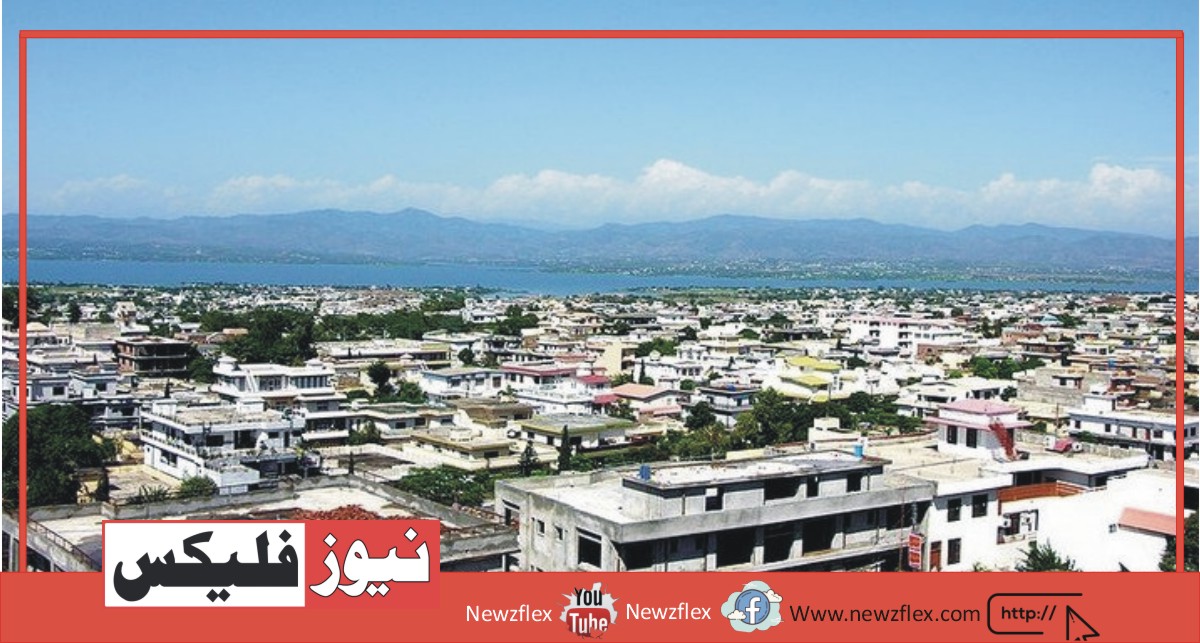
How Pakistani Entrepreneurs Can Successfully Move to the U.S.
If Pakistani entrepreneurs choose to relocate to the United States, they have two excellent options: the EB-5 and L-1A visas.
The entrepreneur should thoroughly consider the pros and cons of each of these two visas before selecting the one that best suits their needs and situation.
We shall compare and contrast the two sorts of visas in the process.
Overview of the L-1A Intracompany Transferee Visa
First off, for intracompany transferees who want to enter the country in a managerial or executive role, the L-1A visa is a nonimmigrant visa.
Rather than awarding permanent residency (a “green card”), the L-1A visa is a nonimmigrant visa that is meant to give temporary lawful work authorization in the United States.
But unlike some other nonimmigrant visas, the L-1A visa allows for “dual intent,” which means that you can legitimately take into account an immigration track when you apply for the visa.
This indicates that an L-1A beneficiary may still be in the process of “moving” to the United States to live there permanently.
What certain conditions must be met for someone to be eligible for an L-1A visa?
First, as was already indicated, the beneficiary needs to be an internal employee of the organisation. More precisely, the beneficiary needs to have worked for a foreign employer with a qualifying relationship to a U.S. corporation (i.e., a branch, parent, affiliate, or subsidiary of the foreign entity) for one continuous year within the previous three years.
In general, L-1A candidates are allowed to work in the United States for a maximum of seven years after entering the country for the first three years, with the potential of two two-year extensions.
For new offices in the United States (defined as those that have been in operation for less than a year), there is, the initial period of entrance is one year, subject to three 2-year renewals, providing for the same maximum stay of seven years.
Startup employees requesting an L-1A visa for a new office are required to submit the following documentation:
1. The planned L-1A employment will involve executive or management control over the new U.S. operations, and the L-1A beneficiary employee has worked continuously for one year in the three years before filing the petition.
2. Within a year of the L-1A petition’s approval, the planned U.S. operation will support an executive or managerial role, as evidenced by the U.S. firm’s financial objectives, available investment from the foreign entity, and organisational structure.
3. In addition to the aforementioned, sufficient physical space has been obtained for the new office for L-1A visa applicants who wish to open one in the United States.
Lastly, the L-1A has several special advantages.
1. An EB-1C visa, which has nearly identical requirements to an L-1A visa, can be obtained quite easily.
2. In contrast to several other nonimmigrant visas, spouses and single children under 21 are eligible to work legally under the L-1A visa.
3. The L-1A visa and its related EB-1C immigrant visa do not have numerical caps, in sharp contrast to the EB-2 immigrant visa. This is in contrast to certain other nonimmigrant job visas, such as the H1-B visa.
Overview of the EB-5 Investor Visa
The EB-5 Visa is an excellent choice for entrepreneurs wishing to relocate to the United States.
The EB-5 visa is an immigrant visa intended for those who want to spend at least $800,000 or $1,050,000 (depending on the area) in a U.S. business that creates ten or more full-time jobs for workers in the country.
This is an immigrant visa, which means the beneficiary is eligible for a green card right away if the EB-5 visa petition is approved. The spouse and unmarried children under the age of 21 who are dependents of investors may also seek permanent resident status.
The $800,000 minimum investment applies to what is known as a “targeted employment area” (TEA), which is characterised as a region that is either rural (i.e., not part of a metropolitan statistical area or city/town with a population of 20,000 or more) or has high unemployment (i.e., at least 150% of the national average unemployment rate).
In contrast, the $1,050,000 minimum investment applies to all other geographic areas.
The 10 newly created U.S. jobs must be full-time (35 hours per week or more), projected to last at least two years, and awarded to US citizens, permanent residents, or other immigrants who are permitted to work in the country for them to be counted.
There are distinctions between direct investments and regional centre investments, regardless of whether the investor filing for an EB-5 visa invests in a TEA or another area.
Investments in regional centres involve the investor being one of tens or even hundreds of other investors and having little to no control over the day-to-day management of the company.
Rather, the investor funds large-scale projects (like hotels or arenas) by investing in specialised businesses that pool the capital of numerous EB-5 investors. US Citizenship and Immigration Services (USCIS) uses a mathematical equation to calculate anticipated total jobs, including those that are indirect and brought about by economic activity generated by other businesses drawn to the regional centre. As a result, the 10 full-time jobs created by such investments do not need to be directly proven.
When an investor makes a direct investment, they typically do so as a single proprietor (or one of a small number of co-owners), with substantial control over the company and active participation in its daily operations. It is, in essence, any investment that is not allocated to a regional centre. The applicant for such investments must demonstrate that the investment directly resulted in the creation of ten full-time jobs.
There is a numerical cap on the EB-5 visa category. 20% of the EB-5 visas available under this ceiling are designated for investors in rural areas, 10% are reserved for investors in areas with high unemployment rates, and 2% are earmarked for investors in infrastructure projects.
There is good news for Pakistani nationals who want to apply under the rural EB-5 category specifically to avoid this backlog: investors in this category also get priority processing.
Furthermore, even though Pakistani nationals are currently eligible for visas under all reserved categories, according to the July 2024 visa bulletin, it’s crucial to remember that the rural category, which makes up a larger portion of reserved spots and is also less in demand than reserved categories like high unemployment areas, is more likely to stay open shortly.
This is noteworthy because, at the moment, the EB-5 petition takes approximately 18 months on average to process by USCIS, and the corresponding green card petition takes an additional 6 to 12 months to process (6 months if the applicant is adjusting status while already in the country, and 8 to 12 months if consular processing is taking place overseas).
Benefits & Drawbacks of Every Visa Category: L-1A visa
Advantages:
short processing time—an average of three to four months—with the option of premium processing, which speeds up processing to fifteen calendar days;
Absence of the requirement for a set initial investment;
The applicant most likely already meets the prerequisite of having worked for the company for a year as an executive or manager outside of the United States (in addition, new office L1-A applicants benefit from the waiver of the requirement that the U.S. office have been operational for a year or more);
can move a number of your company’s overseas employees to the United States with you (which is frequently necessary for prosperous enterprises);
No yearly maximums on numbers;
Can quickly change their status from nonimmigrant L-1A to immigrant EB-1C (an unconditional green card with the option of premium processing).
Cons:
Nonimmigrant visas allow you to enter the country for a maximum of seven years, with extensions; if a new office L-1A is requested, the initial stay period is only one year, and it is scrutinised by USCIS to ensure that sufficient U.S. businesses are being conducted and supported; to be eligible for a new office L-1A visa, you must provide proof of the purchase of physical space and enough capital to fund U.S. operations, which may prove to be more expensive than an EB-5 visa.
Benefits of the EB-5 visa
An immigrant visa, which entitles you and your dependant family members to green cards, or permanent residency, right away;
There are no backlogs for visas if you apply in a reserved category, such as a rural location or a place with a high unemployment rate;
The required investment is lowered from $1,050,000 to $800,000 if applying through a TEA;
TEAs, or high unemployment areas, have occasionally been found to be in places like Manhattan, New York, and Beverly Hills, California; this information could help Pakistani business owners reach urban markets and draw in local talent while making comparatively smaller investments and avoiding visa backlogs;
Investment need not be in the form of money; supplies and inventory can count, which may easily qualify successful businesses in industries like biotech that require expensive equipment;
Cons:
lengthy processing period (especially for rural EB-5 applicants compared to L-1A applicants);
required a minimum investment of $80000–$1,050,000, which is predetermined and costly;
Business owners are less likely to invest in a regional centre since they typically prefer to have individualised control over their enterprises; therefore, they must demonstrate that their investment has directly resulted in the creation of 10 full-time jobs for citizens or permanent residents of the United States;
If you want to hire people on an H1-B visa (which is common in tech jobs, for example) or transfer your current employees from outside the country under an L-1A visa, those workers do not count towards the 10 full-time jobs because those visas fall under the nonimmigrant category; additionally, the visa has an initial 2-year conditional residency, meaning that if the business fails, the green card can be revoked, meaning you run the risk of losing both the substantial financial investment and the
In summary
Given everything said above, what kind of visa is most appropriate for a Pakistani business owner who wants to relocate to the United States?
Naturally, the response is that it depends.
Overall, the L-1A visa category is generally better for business founders in particular because it is easier to process, carries less financial risk, has no geographic restrictions, offers a relatively simple path to permanent residency, and permits the hiring of nonimmigrant workers, including qualified key personnel from the startup abroad.
But depending on the specific situation, there can be some situations where the EB-5 investor visa makes more sense.
In the end, for Pakistani business owners who meet the requirements and want to relocate to the United States, either visa is a fantastic option.
ال۔ ۱اے اور ای بی۔ ۵ دونوں ویزا ان پاکستانی کاروباریوں کے لیے بہترین انتخاب ہیں جو امریکہ جانا چاہتے ہیں۔
یہ فیصلہ کرنے سے پہلے کہ ان دونوں ویزوں میں سے کون سا ترجیحی ہے، کاروباری کو دونوں ویزوں کے درمیان فرق کو احتیاط سے جانچنا چاہیے اور یہ دیکھنا چاہیے کہ کون سا ان کی ضروریات اور حالات کے مطابق ہے۔
ایسا کرتے ہوئے، ہم ویزا کی دونوں اقسام کا ایک جائزہ اور تضاد فراہم کریں گے۔
ال۔ ۱اے انٹرا کمپنی ٹرانسفری ویزا کا جائزہ
شروع کرنے کے لیے، ال۔ ۱اے ویزا انٹرا کمپنی ٹرانسفرز کے لیے ایک غیر تارکین وطن ویزا ہے جو انتظامی یا ایگزیکٹو کی حیثیت سے امریکہ آنا چاہتے ہیں،
ال۔ ۱اے ویزا، ایک نان امیگرنٹ ویزا کے طور پر، مستقل رہائش (ایک ‘گرین کارڈ’) دینے کے بجائے، ریاستہائے متحدہ میں عارضی قانونی کام کی اجازت فراہم کرنا ہے۔
تاہم، ال۔ ۱اے ویزا کا ‘دوہری ارادہ’ ہوتا ہے، مطلب یہ ہے کہ، کچھ دوسرے نان امیگرنٹ ویزوں کے برعکس، ویزا کے لیے درخواست دیتے وقت امیگریشن کے راستے پر غور کرنا قانونی ہے۔
اس کا بنیادی مطلب یہ ہے کہال۔ ۱اے سے فائدہ اٹھانے والا اب بھی مستقل طور پر ریاست ہائے متحدہ امریکہ میں رہنے کے راستے پر ہو سکتا ہے – اس لیے وہاں ‘منتقل’ ہو رہا ہے۔
تو، کسی کے لیے ال۔ ۱اے ویزا کے اہل ہونے کے لیے کیا مخصوص تقاضے ہیں؟
ایک کے لیے، جیسا کہ اوپر ذکر کیا گیا ہے، فائدہ اٹھانے والا انٹرا کمپنی کا ملازم ہونا چاہیے۔ مزید خاص طور پر، مستفید کنندہ نے ایک ایسے غیر ملکی آجر کے لیے پچھلے تین سالوں کے اندر ایک مسلسل سال تک کام کیا ہو گا جس کا کسی امریکی کمپنی (یعنی ایک برانچ، والدین، ملحقہ، یا غیر ملکی ادارے کا ذیلی ادارہ) کے ساتھ اہلیت کا رشتہ ہے۔
ال۔ ۱اے درخواست دہندگان کو عام طور پر تین سال کی ابتدائی مدت کے لیے کام کرنے کے لیے امریکہ میں داخل ہونے کی اجازت ہوتی ہے، جس میں 2 سال کی دو تجدید کا امکان ہوتا ہے، زیادہ سے زیادہ سات سال قیام کی اجازت ہوتی ہے۔
ال۔ ۱اے کا تھوڑا سا تغیر امریکہ میں نئے دفاتر پر لاگو ہوتا ہے (ایک سال سے کم کے لیے آپریشنل کے طور پر بیان کیا جاتا ہے)، اس صورت میں داخلے کی ابتدائی مدت ایک سال ہے، جو تین ۲ سال کی تجدید کے ساتھ مشروط ہے، اسی کی اجازت دیتے ہوئے سات سال کی زیادہ سے زیادہ قیام.
ایک نیا دفتر ال۔ ۱اے ویزا حاصل کرنے کے خواہاں اسٹارٹ اپ اہلکاروں کو درج ذیل ثبوت فراہم کرنا ہوں گے
ال۔ ۱اے سے فائدہ اٹھانے والے ملازم نے ایک ایگزیکٹو یا انتظامی صلاحیت میں پٹیشن دائر کرنے سے پہلے تین سال کے اندر مسلسل ایک سال تک کام کیا ہے، اور مجوزہ ال۔ ۱اے ملازمت میں نئے امریکی آپریشنز پر ایگزیکٹو یا انتظامی اتھارٹی شامل ہوگی۔
مطلوبہ امریکی آپریشن v پٹیشن کی منظوری کے ایک سال کے اندر انتظامی یا انتظامی عہدے کی حمایت کرے گا، جسے امریکی ادارے کے ڈھانچے، مالی اہداف، اور غیر ملکی ادارے سے دستیاب سرمایہ کاری سے ظاہر کیا جا سکتا ہے۔
مندرجہ بالا کے علاوہ، ال۔ ۱اے ویزا کے درخواست دہندگان کے لیے جو کہ امریکہ میں نیا دفتر قائم کرنا چاہتے ہیں، نئے دفتر کے لیے مناسب جگہ محفوظ کر لی گئی ہے۔
آخر میں، ال۔ ۱اے میں کئی منفرد فوائد شامل ہیں۔
ال۔ ۱اے ویزا کم و بیش یکساں ضروریات (یعنی ای بی۔ ۱ سی ویزا) کے ساتھ گرین کارڈ میں نسبتاً آسان منتقلی فراہم کرتا ہے۔
کچھ دوسرے غیر تارکین وطن ویزوں کے برعکس،ال۔ ۱اے ویزا میاں بیوی اور ۲۱ سال سے کم عمر کے غیر شادی شدہ بچوں کو قانونی طور پر کام کرنے کی اجازت دیتا ہے۔
کچھ دوسرے نان امیگرنٹ ایمپلائمنٹ ویزا (جیسے اچھ۔ ۱ بی ویزا) کے برعکس، ال۔ ۱اے ویزا (یا اس معاملے کے لیے، متعلقہ ای بی۔ ۱ سی امیگرنٹ ویزا – ای بی۔ کے بالکل برعکس) کے لیے کوئی عددی کیپس دستیاب نہیں ہیں۔ ۲ تارکین وطن کا ویزا۔
ای بی ۔۵ سرمایہ کار ویزا کا جائزہ
کاروباری بانیوں کے لیے امریکہ جانے کا ایک اور بہترین آپشن ای بی ۔۵ ویزا ہے۔
ای بی ۔ ۵ ویزا ان لوگوں کے لیے تارکین وطن کا ویزا ہے جو امریکی کاروبار میں کم از کم ۸۰۰،۰۰۰ یا ۱،۰۵۰،۰۰۰ (مقام کے لحاظ سے) کی سرمایہ کاری کرنا چاہتے ہیں جس سے امریکی کارکنوں کے لیے کم از کم ۱۰ کل وقتی ملازمتیں پیدا ہوتی ہیں۔
بطور امیگرنٹ ویزا، اس کا مطلب ہے کہ ای بی۔۵ ویزا پٹیشن کی منظوری کے بعد، فائدہ اٹھانے والا فوری طور پر گرین کارڈ کا حقدار ہے۔ سرمایہ کاروں کے زیر کفالت افراد (۲۱ سال سے کم عمر میاں بیوی اور غیر شادی شدہ بچے) بھی مستقل رہائشی حیثیت کے لیے درخواست دینے کے اہل ہوں گے۔
۸۰۰،۰۰۰ کی کم از کم سرمایہ کاری اس پر لاگو ہوتی ہے جسے ‘ٹارگیٹڈ ایمپلائمنٹ ایریا’ (چائے) کہا جاتا ہے، جس کی تعریف ایک ایسے جغرافیائی علاقے کے طور پر کی جاتی ہے جس میں یا تو بہت زیادہ بے روزگاری ہو (یعنی، قومی اوسط بے روزگاری کی شرح کا کم از کم ۱۵۰ ہے) یا ورنہ دیہی ہے (یعنی میٹروپولیٹن شماریاتی علاقے یا شہر/قصبے کے اندر واقع نہیں ہے جس کی آبادی ۲۰،۰۰۰ یا اس سے زیادہ ہو)۔
اس کے برعکس، ۱،۰۵۰،۰۰۰ کی کم از کم سرمایہ کاری دیگر تمام جغرافیائی علاقوں پر لاگو ہوتی ہے۔
۱۰ پیدا کی گئی امریکی ملازمتوں کو شمار کرنے کے لیے، ہر ایک ملازمت کو کل وقتی ہونا چاہیے (یعنی، ہفتے میں 35 گھنٹے یا اس سے زیادہ)؛ کم از کم دو سال تک رہنے کی توقع ہے؛ اور امریکی شہریوں، مستقل رہائشیوں، اور/یا امریکہ میں کام کرنے کے مجاز دوسرے تارکین وطن کو دیا جائے۔
قطع نظر اس کے کہ ای بی۔ ۵ ویزا درخواست گزار کسی چائے یا دوسرے علاقے میں سرمایہ کاری کرتا ہے، علاقائی مرکز کی سرمایہ کاری اور براہ راست سرمایہ کاری میں بھی فرق ہے۔
علاقائی مرکز کی سرمایہ کاری ایسی سرمایہ کاری ہوتی ہے جہاں سرمایہ کار دسیوں (اگر سینکڑوں نہیں) دوسرے سرمایہ کاروں میں سے ایک ہوتا ہے، اور کاروبار کے روزمرہ کے کاموں میں اس کا کوئی حصہ نہیں ہوتا ہے۔








